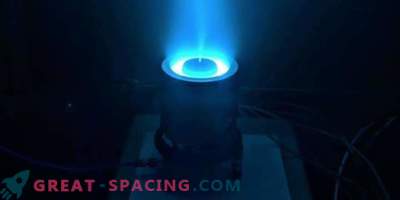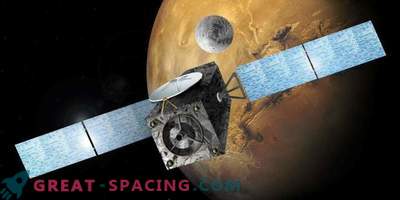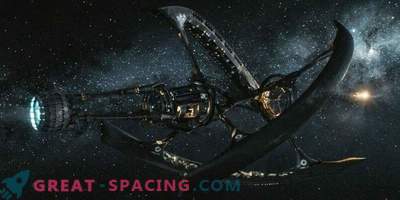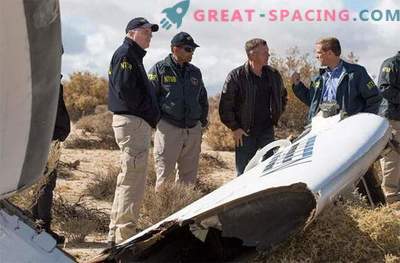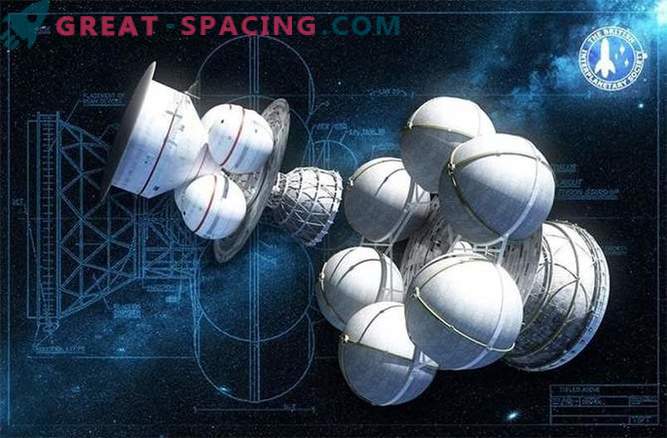
Last November, during a TVIW (astronomical seminar in Tennessee devoted to interstellar flights), Rob Swinney - former squadron commander of the Royal Air Force, engineer and MSc responsible for the “Icarus” project - presented a report on the work done on the project lately. Swinney refreshed the story of Icarus from the public: from inspiration with the ideas of the Daedalus project, highlighted in a BIS report (British Interplanetary Society - the oldest organization supporting space research) in 1978, to a joint decision of the BIS and Tau Zero enthusiasts to resume research in 2009 year, and before the latest news about the project, dated 2014 year.
The original draft of the 78th year was simple in its wording, but difficult to implement, to answer the question asked by Enrique Fermi: “If there is a reasonable life beyond Earth, and interstellar flights are possible, then why is there no evidence for other alien civilizations?”. Daedalus research was aimed at developing an interstellar spacecraft design using existing technologies in reasonable extrapolations. And the results of the work thundered to the whole scientific world: the creation of such a ship is really possible. The project report was supported by a detailed plan of the ship using deuterium-helium-3 fusion from pre-prepared granules. Daedalus then served as a guideline for all subsequent developments in the field of interstellar flights for 30 years.
Icarus, son of Daedalus

However, after such a long time, it was necessary to revise the ideas and technical solutions adopted in “Daedal” in order to assess how much they stood the test of time. In addition, during this period new discoveries were made, a change in the design in accordance with them would improve the overall performance of the ship. Also, the organizers wanted to interest the younger generation in astronomy and the construction of interstellar space stations. The new project was named in honor of Icarus, son of Daedalus, which, despite the negative shade of the name, corresponded to the first words in the report of the 78th year:
“We hope that this option will replace the future design, the analogue of Icarus, which will display the latest discoveries and technical innovations so that Icarus can reach the heights still unconquered by Daedalus. Hopefully, thanks to the development of our ideas, the day will come when humanity will literally touch the stars. ”
Rethinking Icarus
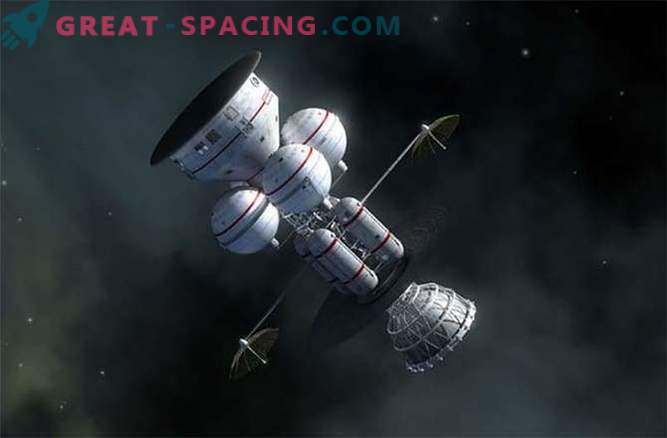
So, “Icarus” was created exactly as a continuation of “Daedalus”. The indicators of the old project still look very promising, but still need to be refined and updated:
1) In “Dedal”, relativistic electron beams were used to compress fuel granules, but subsequent studies showed that this method is not capable of giving the necessary impulse. Ion beams are used instead in laboratories for fusion. Nevertheless, such a miscalculation, which cost the National Complex of Thermonuclear Reactions 20 years of work and 4 billion dollars, showed the difficulty of handling thermonuclear fusion even under ideal conditions.
2) The main obstacle faced by “Daedalus” - Helium-3. It is not on Earth, and therefore it is necessary to extract it from gas giants distant from our planet. This process is too expensive and complicated. 3) Another problem that “Ikara” will have to solve is the rejection of information about nuclear reactions. It was the lack of information that made it possible 30 years ago to make very optimistic calculations of the effects of irradiation of the entire ship with gamma rays and neutrons, the emission of which cannot be dispensed by the engine on fusion.
4) Tritium was used in pellets of fuel for ignition, but too much heat was released from the decay of its atoms. Without a proper cooling system, ignition of the fuel will be accompanied by ignition of the rest.
5) Decompression of tanks with fuel due to emptying may cause an explosion in the combustion chamber. To solve this problem, weighting agents have been added to the design of the tank to balance the pressure in different parts of the mechanism.
6) The last difficulty is the maintenance of the vessel. According to the project, the ship is equipped with a pair of robots, similar to R2D2, which, using diagnostic algorithms, will detect and repair possible damage. Such technologies seem to be very complicated even now, in the computer era, to say nothing of the 70s.
New ship options
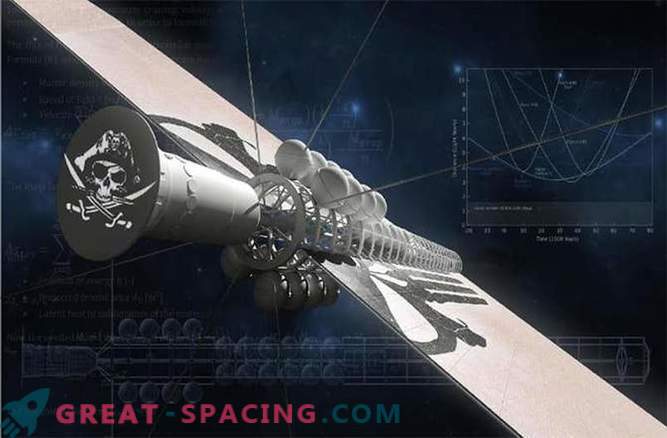
The new design team is no longer limited to the creation of a maneuverable ship. For research facilities “Icarus” uses probes carried on board the ship. This not only simplifies the designers' task, but also significantly reduces the time spent studying star systems. Instead of deuterium-helium-3, a new spacecraft is working on pure deuterium-deuterium. Despite the greater emission of neutrons, the new fuel will not only increase the efficiency of the engines, but also eliminate the need to extract resources from the surface of other planets. Deuterium is actively mined from the oceans and is used in nuclear power plants operating on heavy water. However, mankind has so far failed to obtain a controlled decay reaction with the release of energy. The protracted race of laboratories around the world for exothermic nuclear fusion hinders ship design. So the question of the optimal fuel for an interstellar vessel remains open. In an attempt to find a solution in 2013, an internal competition was held among the units of BIS. The team won the WWAR Ghost from the University of Munich. Their design is based on thermonuclear fusion using a laser that provides rapid heating of the fuel to the required temperature.
Interstellar ship “Icarus”: vision of the cosmic future of humanity
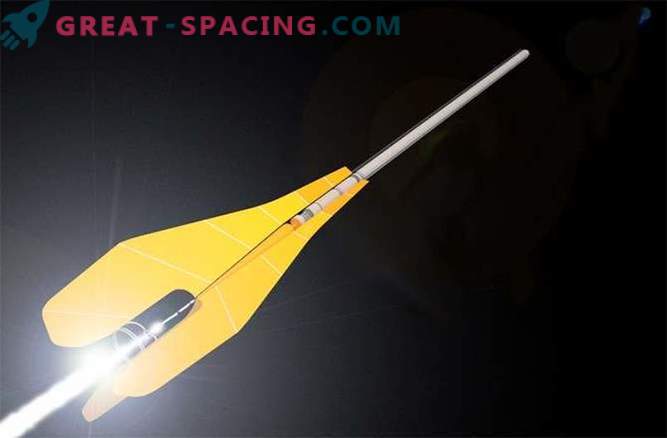
Despite the originality of the idea and some engineering moves, the contestants could not solve the main dilemma - the choice of fuel. In addition, the winning ship is huge. It exceeds the size of “Daedalus” by 4-5 times, and other methods of thermonuclear fusion may need less space.
Accordingly, it was decided to promote two types of engines: based on thermonuclear fusion and based on pinch Bennett (plasma engine). In addition, parallel to deuterium-deuterium, the old version with tritium-helium-3 is also considered. In fact, helium-3 gives the best results in any kind of engine, so scientists are working on ways to get it.
An interesting relationship can be traced in the works of all participants in the competition: some elements of the structure (probes for environmental studies, fuel storage, secondary power supply systems, etc.) of any ship remain unchanged. Definitely one can say the following:
- The ship will be hot. Any method of burning any of the presented types of fuel is accompanied by the release of large amounts of heat. Deuterium requires a massive cooling system due to the direct release of thermal energy during the reaction. A magnetic plasma engine will create eddy currents in the surrounding metals, also heating them. On Earth, there are already radiators of sufficient power to effectively cool bodies with temperatures over 1000C, it remains to adapt them to the needs and conditions of the starship.
- The ship will be colossal. One of the main tasks assigned to the Icarus project was to reduce the size, but over time it became clear that thermonuclear reactions required a lot of space. Even the smallest-weight design options weigh tens of thousands of tons.
- The ship will be long. “Daedalus” was very compact, each part of it was combined with another, like a matryoshka. At Ikar, attempts to minimize radioactive effects on the vessel led to its lengthening (this is well demonstrated in the Firefly project by Robert Freeland).
Zeus
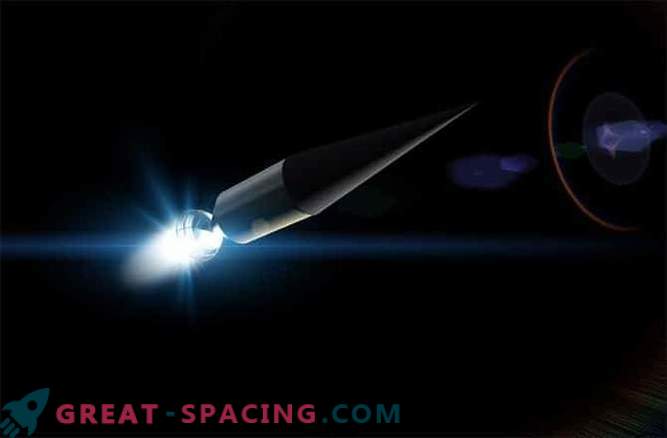
Rob Swinney reported that a group from Drexel University joined the Icarus project. “Beginners” promote the idea of using PJMIF (a system based on inkjet plasma supply with the help of magnets, while the plasma is stratified, providing conditions for nuclear reactions). This principle is currently the most effective. In fact, it is a symbiosis of two methods of nuclear reactions, it has absorbed all the advantages of inertial and magnetic thermonuclear fusion, such as reducing the mass of the structure, and a significant decrease in cost. Their project is called “Zeus”.
“Time to get out of here”
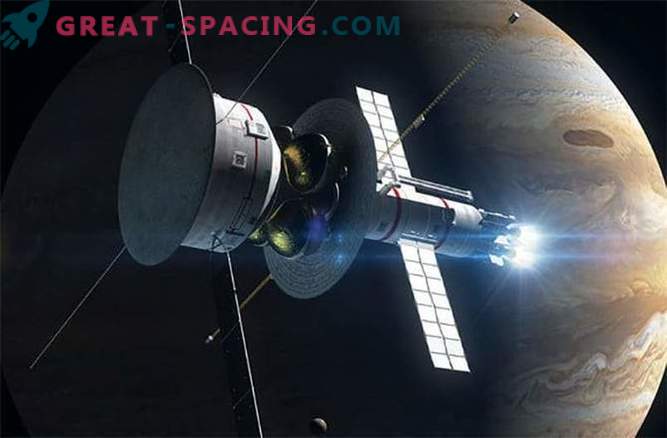
Shortly before TVIW, the “Icarus” project held an exhibition in Australia, at which all the above-mentioned projects were shown to the public. Scientists from all over the world gathered under one roof to share experiences. This is a rare opportunity for professionals participating in an intercontinental project to chat with their colleagues.
After this meeting, TVIW took place, at which Swinney set a preliminary date for the completion of the Icarus project - August 2015. The latest report will include references to modifications of old Daedalus developments and innovations completely created by the new team. The seminar was concluded by a monologue of Rob Swinney, in which he said: “The mysteries of the Universe are waiting for us somewhere there! Time to get out of here! ”
Cyclops Dawn
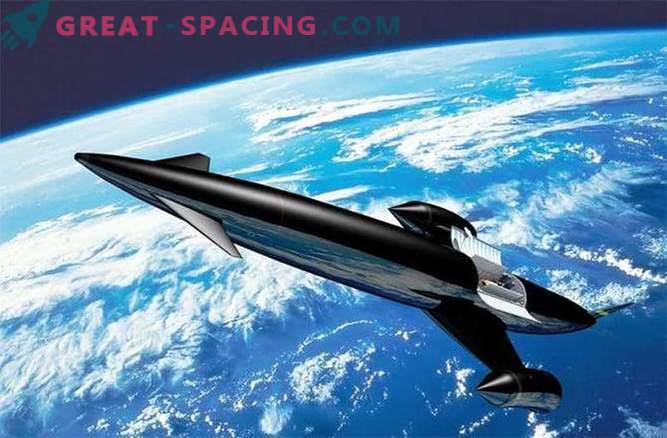
It is interesting that the new project is inextricably linked with its predecessor. The transport for delivering parts and fuel to Earth’s small orbit during the construction of the Icara can be the Cyclops, a short-range spacecraft developed under the direction of Alan Bond (one of the engineers who worked on the Daedalus).









